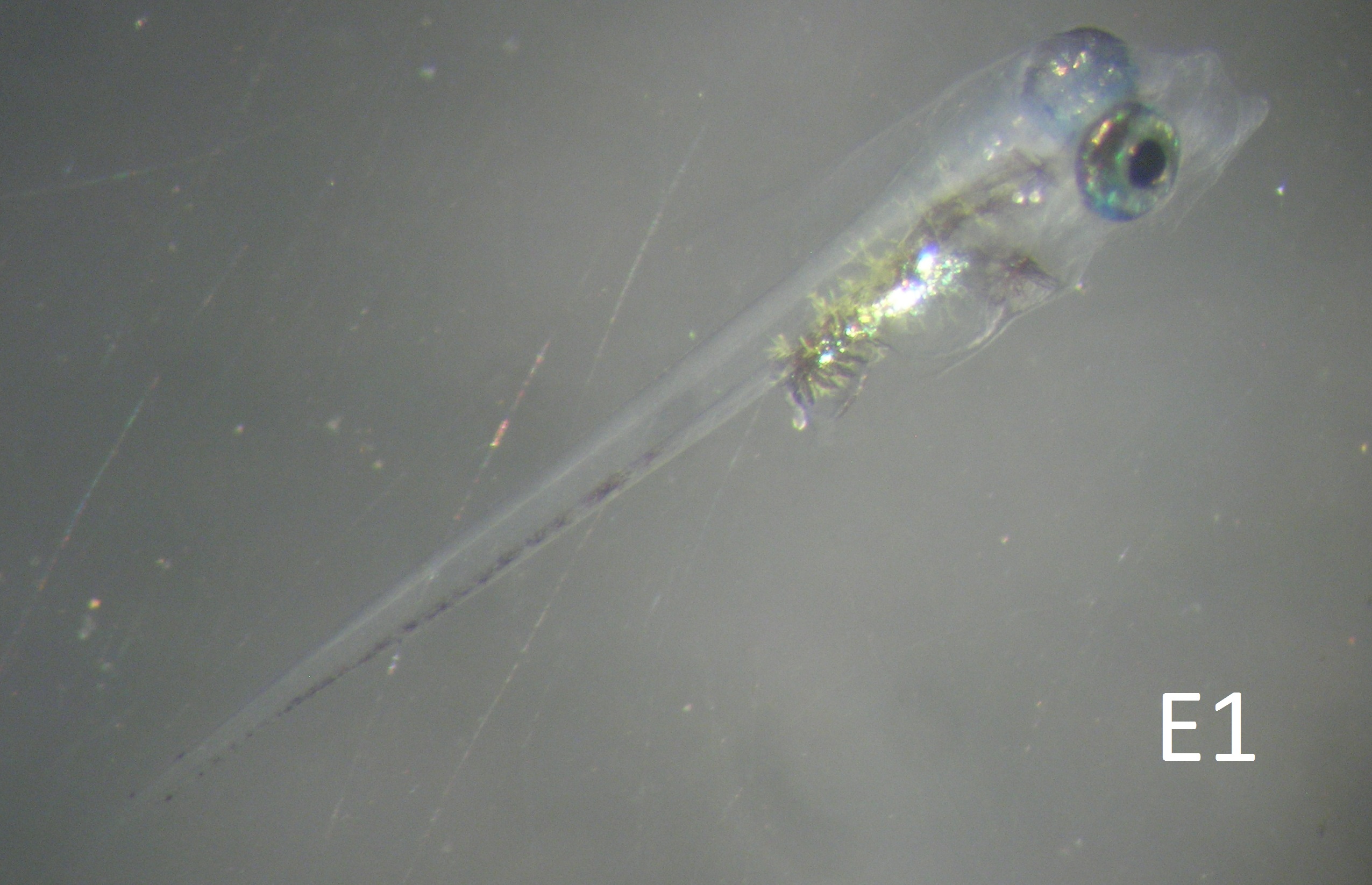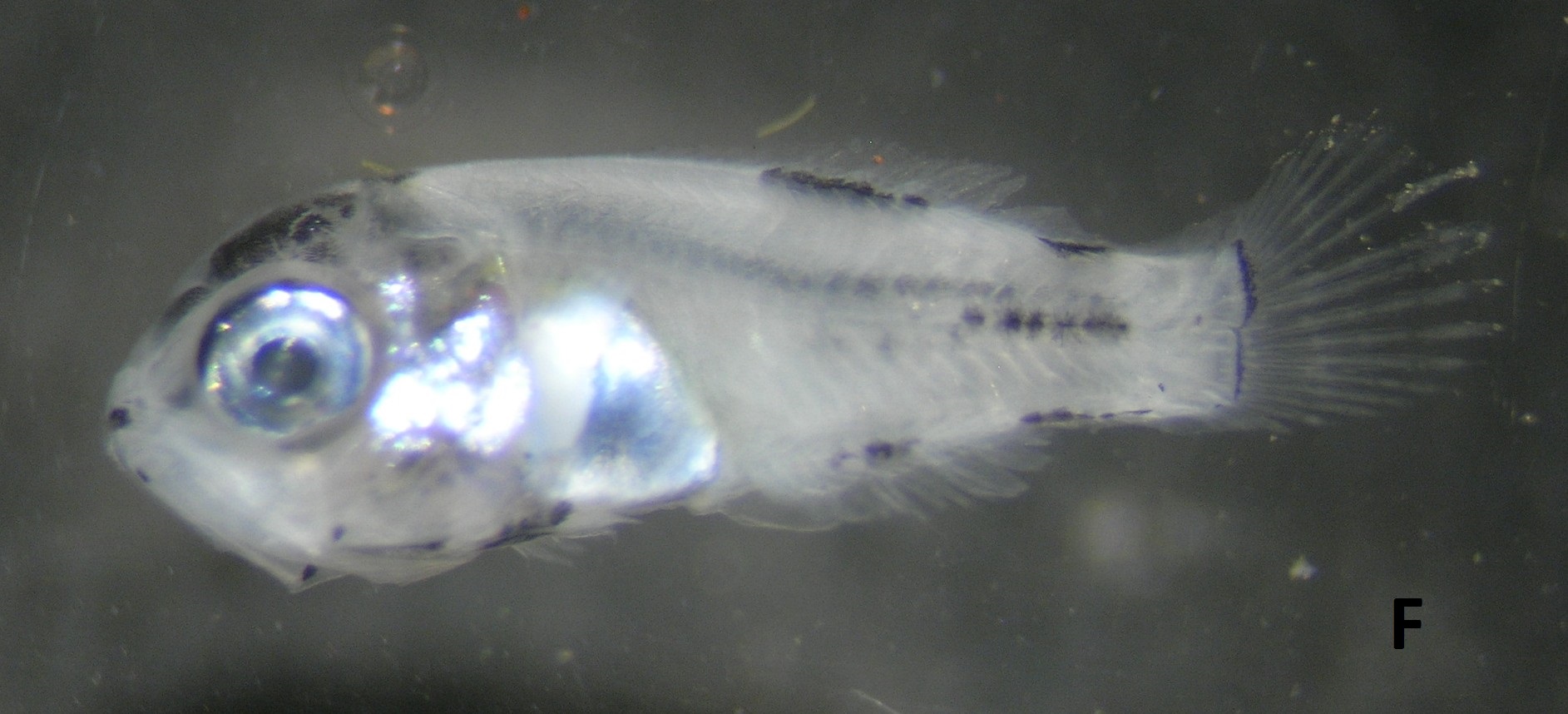Dichistiidae: F III A2A
Dichistius multifasciatus (Pellegrin 1914)
Banded galjoen








Egg diameter in µm |
Number of oil globules |
Diameter of oil globule in µm |
Yolk texture |
Perivitelline space |
Position of oil globule at hatch |
Gut length at eye- pigment stage |
Myomeres |
865-910 |
1 |
220-250 |
segmented |
narrow |
stern |
39% of NL |
25-26 |
Egg: This striking egg has a halo of yellow/green stellate pigment spots on the oil globule and a C-shape of the same pigment on the head of the embryo (A). The posterior half of the embryo is more evenly covered. Black pigment follows a similar pattern, highlighted on a white background. My notes often refer to these eggs as kob-like (LIIIA8), but kob eggs lack segmentation in the yolk, and the yellow pigment in kob eggs is usually more orange. To add to the confusion, however, the segmentation is unclear, or possibly absent, and initially the unsegmented yolk egg was catalogued under the code LIIIB8. The two pages have now been merged. Incubation time is about 35 hours (21°C).
Larva: The early larva has a distinctive, bright white/yellow pigment pattern (B & C), which has almost disappeared by day 4 (D). At 5 days post-hatch, a metallic blue sheen develops over the gut (E1). B: 1 day, C: 2 days, D: 4 days, E: 6-7 days (21°C). The 5.5mm postflexion juvenile included (F), was collected in the inshore sample at Park Rynie on 19 September 2007 (|DSLAF499-08|ACD07 in BOLD).
The early yellow pigment pattern, segmented yolk, and oil globule in the stern, add up to a larva which can only be confused with FIIIA4B, but the latter has a myomere count in excess of 30. DNA barcoding sequences of 7 larvae, match the sequences of 5 adult banded galjoen from the KZN coast (BOLD).



Linked samples |
Offshore |
Inshore |
Eggs |
38 |
127 |
Hits |
11 |
47 |
Most of these eggs were seen in April to July, tapering off in early summer (blue graph). The egg was also seen on several occasions in DHM samples, from June to November (green graph). Eggs have been seen more frequently in recent years (white graph). The high incidence (77%), in inshore samples from the Park Rynie linked samples, suggests spawning close inshore; hence its presence in the DHM samples. See Section 7.3 and Table 1 of the Introductory Notes, for more information on the linked samples.